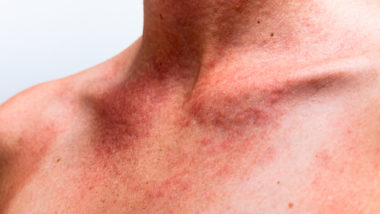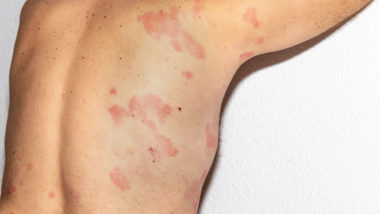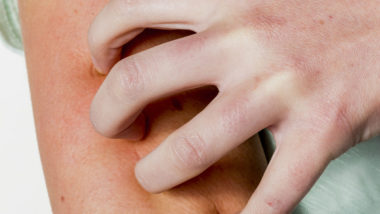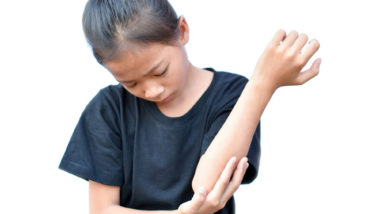Top Class Actions’s website and social media posts use affiliate links. If you make a purchase using such links, we may receive a commission, but it will not result in any additional charges to you. Please review our Affiliate Link Disclosure for more information.
The rare disorder known as Stevens Johnson syndrome (SJS) is severe, affecting the skin and mucous membranes. It is considered a medical emergency, generally requires hospitalization, and is potentially life-threatening, so it is important to look out for the early signs of Stevens Johnson syndrome in order to seek medical help as soon as you can.
SJS might also be referred to as Lyell’s syndrome or as the Stevens Johnson syndrome-toxic epidermal necrolysis spectrum. Most cases of SJS occur in adults younger than age 30 and children. However, the elderly and others can also be affected. More cases have been reported in female patients than in males.
It is believed that antibiotics, sulfa drugs and anti-epileptics like Lamictal are responsible for over 50% of diagnosed SJS cases. Some of the most common drug-related causes include anti-epileptics, antibiotics, and sulfa drugs. Some patients argue that their development of SJS was directly caused by taking the medication Lamictal.
How Does Stevens Johnson Syndrome Start?
Stevens Johnson syndrome can be caused by a number of factors and has been linked with exposure to several drugs. These include:
- Anti-gout medications like allopurinol
- Medications for seizures (like Dilantin or Lamictal)
- Medications for mental illness
- Antibacterial sulfonamides (including sulfasalazine)
- Nevirapine (Viramune, Viramune XR)
- Pain relievers, such as acetaminophen (Tylenol, others), ibuprofen (Advil, Motrin IB, others) and naproxen sodium (Aleve)
Stevens Johnson syndrome usually begins with simple flu-like symptoms, which may seem innocuous in and of themselves. Then, patients experience a painful rash that breaks out, spreading, and blistering. At that point, the top layer of skin in the affected area dies and sheds, and after several days, begins to heal.
A more severe version of this condition is officially called toxic epidermal necrolysis (TEN), a form of SJS that affects 30% or more of the surface area of a person’s skin, as well as extensive mucous membrane damage. Toxic epidermal necrolysis has a higher mortality rate than SJS. Indeed, approximately 40% of TEN diagnoses result in fatalities.
Early Signs of Stevens Johnson Syndrome to Look Out For
Early signs of Stevens Johnson syndrome are important to keep an eye on, especially if you’re taking a drug that has been linked with this condition. Paying close attention to these early signs and symptoms can help you access medical care as early as possible.
These early signs of Stevens Johnson syndrome include:
- Fever
- Sore mouth and throat
- Fatigue
- Burning eyes
- Cough
- Joint pain
- Feeling generally unwell
These symptoms typically show up one to three days prior to the development of a rash. These symptoms, however, are not an immediate indicator of SJS—they are considered flu-like symptoms, so a patient may not be aware that their symptoms are actually caused by SJS. As the condition develops, however, symptoms begin to distinguish themselves from the flu. Patients will begin to experience symptoms like:
- Unexplained widespread skin pain
- A red or purplish rash that spreads
- Blisters on their skin and the mucous membranes of the mouth, nose, eyes, and genitals
- Shedding of the skin within days after the blisters form
The earlier patients seek medical treatment for SJS, the better.
Stevens Johnson Syndrome Diagnosis
The diagnosis of Stevens Johnson syndrome typically includes several tests and procedures. Tests to confirm the diagnosis include skin biopsy, imaging, and blood tests.
For many patients, it is easy to identify Stevens Johnson syndrome based on their medical history, along with a physical exam. Doctors will review any medications you are currently taking or have recently stopped to determine if any are linked with SJS.
 Stevens Johnson Syndrome Treatment Guidelines
Stevens Johnson Syndrome Treatment Guidelines
Most cases of Stevens Johnson syndrome require hospitalization. Because of the severity of the rashes associated with this infection—which are extensive and burn-like in nature—patients often spend time in an intensive care unit or even a burn unit. The treatment provided by physicians who have identified SJS will focus on eliminating the underlying cause and then minimizing complications and controlling symptoms as the skin regrows.
The most essential step to treat Stevens Johnson syndrome is immediately stopping taking any drugs that may be causing it. This may involve stopping all nonessential medications, since your doctor may not initially be able to determine which drug is causing the problem. The patient who has been diagnosed with SJS or TEN would need to permanently avoid that drug and others related to it.
While hospitalized, SJS patients undergo fluid replacement and nutrition through a nasogastric tube, careful wound care to deal with the affected skin, and eye care if necessary. It is of utmost importance to prevent infection, as the infection is usually what becomes fatal.
What Does Recovery from SJS Look Like?
Recovery periods can range from days to months, depending on the patient’s underlying condition’s severity. Patients who recover from SJS and TEN can still suffer from major eye problems, internal organ damage, and permanent skin damage.
Several days prior to the development of the rash, a patient might have some other symptoms that they might not connect to the rash, such as cough, fever, sore mouth and throat, fatigue, or burning eyes.
What Is Lamictal?
Lamictal is a medication, produced by GlaxoSmithKline, that is prescribed to those patients who have been diagnosed to treat seizures in epileptic patients. It has also been given to those patients who have extreme mood swings due to bipolar disorder in adults.
Young pediatric patients taking the epileptic medication Lamictal may be at a higher risk of developing Stevens Johnson Syndrome. Lamictal SJS studies found that Lamictal increased risks for SJS and Toxic Epidermal Necrolysis in teens.
One patient who experienced severe side effects after taking Lamictal spoke to The Sun about his experiences. Jonathan L. of Indiana claims that soon after he began taking Lamictal for the treatment of depression and bipolar II in 2016, he began to experience symptoms of the dangerous skin condition.
Along with troubling early signs of Stevens Johnson syndrome including a sore throat, difficulty sleeping, and a general feeling that something wasn’t right, he also noticed sores forming on his lips and mouth. Once his skin started to flake off, he went to the hospital. After being admitted to the hospital, he was diagnosed with Stevens Johnson Syndrome, and treatment was started immediately. As the condition had already begun to affect his mucus membranes including his eyes, Jonathan was required to have his eyes stitched shut in order to prevent further damage.
“There’s not a lot that doctors can do when you have SJS,” Jonathan told the Sun. “Treatment is considered ‘supportive.'” In addition to stitching his eyes shut, he also needed to have his hands bound to prevent him from ripping out any tubes or accidentally injuring his fragile skin.
He spent 11 days being treated in the ICU, and approximately 3 weeks in the hospital overall. Although he underwent surgery, skin grafts, and other treatments soon enough to prevent the disease from becoming fatal, he claims that some of the damage caused by the condition has been long lasting. It took months for his vision to fully recover.
Filing a Stevens Johnson Syndrome Lawsuit
A growing number of people are filing lawsuits over the anticonvulsant Dilantin, alleging the medication led to their diagnosis with Stevens Johnson syndrome.
If you or someone you love has suffered from Stevens Johnson syndrome or toxic epidermal necrolysis after taking Dilantin (phenytoin) or another drug, you may be able to file a lawsuit and pursue compensation. Filing a lawsuit cannot take away the pain and suffering caused by these serious complications, nor can it bring a loved one back to life, but it can at least help to alleviate the financial burden incurred by medical expenses, lost wages, and more.
Filing a lawsuit can be a daunting prospect, especially in the wake of these serious complications, so Top Class Actions has laid the groundwork for you by connecting you with an experienced attorney. Consulting an attorney can help you determine if you have a claim, navigate the complexities of litigation, and maximize your potential compensation.
Join a Free Stevens Johnson Syndrome Symptoms & Toxic Epidermal Necrolysis Lawsuit Investigation
You may qualify for this investigation under the following circumstances:
- You or loved one took an over-the-counter or prescription drug that caused you to develop SJS or TEN;
- You or your loved one was diagnosed with SJS or TEN; and
- You or your loved one was hospitalized because of SJS or TEN.
You may be able to hold the drug company accountable by joining this Stevens Johnson Syndrome lawsuit investigation.
See if you qualify by filling out the form on this page.
ATTORNEY ADVERTISING
Top Class Actions is a Proud Member of the American Bar Association
LEGAL INFORMATION IS NOT LEGAL ADVICE
Top Class Actions Legal Statement
©2008 – 2024 Top Class Actions® LLC
Various Trademarks held by their respective owners
This website is not intended for viewing or usage by European Union citizens.
Get Help – It’s Free
Join a Free Stevens Johnson Syndrome Symptoms & Toxic Epidermal Necrolysis Lawsuit Investigation
If you qualify, an attorney will contact you to discuss the details of your potential case at no charge to you.
PLEASE NOTE: If you want to participate in this investigation, it is imperative that you reply to the law firm if they call or email you. Failing to do so may result in you not getting signed up as a client or getting you dropped as a client.
Oops! We could not locate your form.

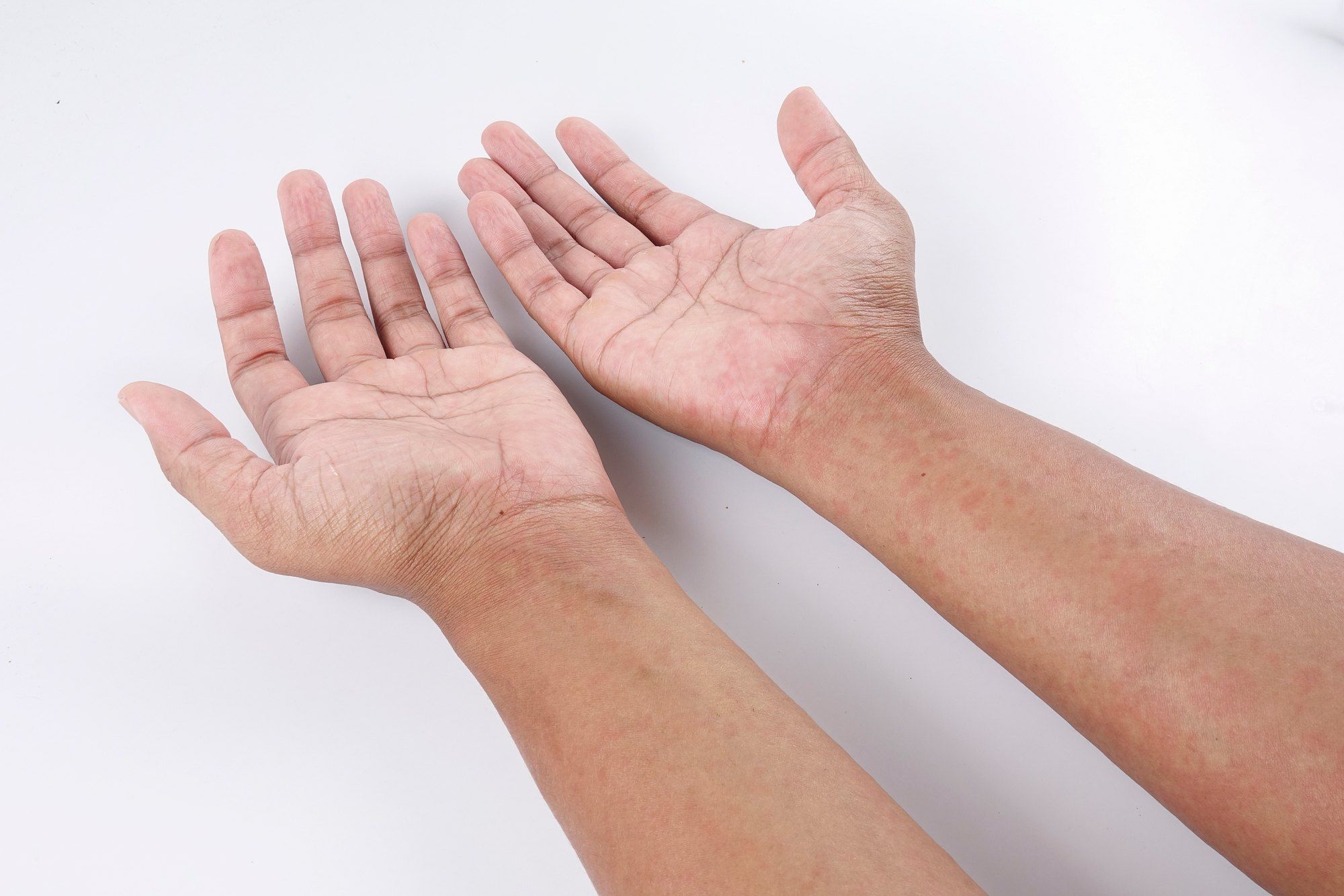
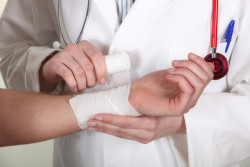 Stevens Johnson Syndrome Treatment Guidelines
Stevens Johnson Syndrome Treatment Guidelines



